Potty training is something that parents look forward to as this means the end to diaper changes.
However, there seem to be many different thoughts on which potty training method works the best.
There are a lot of factors to look into when deciding if your child is ready for the transition to underwear from diapers.
In this post the following topics will be covered:
- What is the ideal age for potty training?
- How to Get Started With Potty Training
- Going Diaper Free
- Potty Training Problems
- Potty Training Too Early
- Potty Trained at Home But Not At Childcare
- Frequently Asked Questions
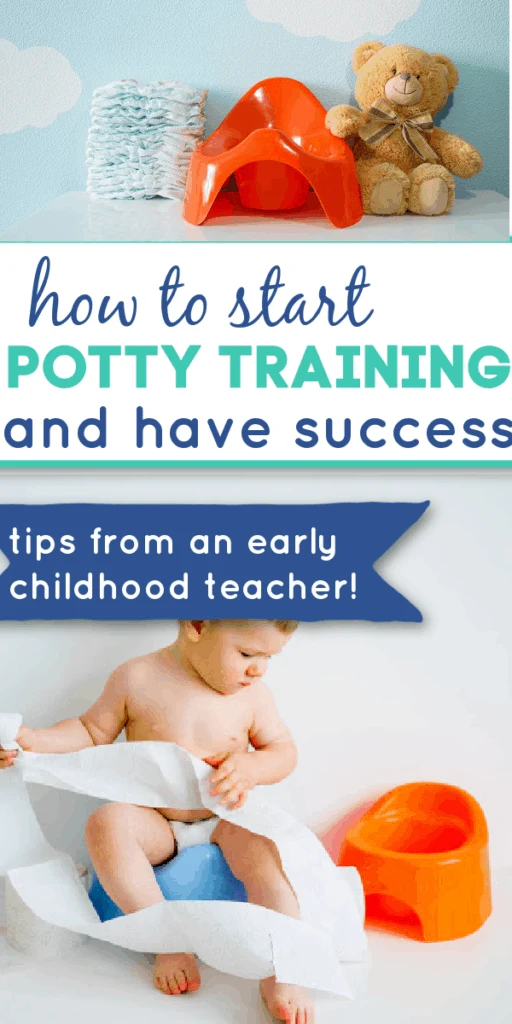
(This post may contain affiliate links. To read our full disclosure policy click here.)
How to Have Success with Positive Potty Training Methods
What is the ideal potty training age?
Potty training should start once your child is showing interest. I do not believe in a magic number as to when your child is the right age…all children are different!
They can show interest in many ways. Here are some signs that they may be ready to learn more about using the potty:
- They are interested in the actual toilet.
- They can tell you when they have a wet/dirty diaper.
- They take off their diaper when they are wet/dirty.
- They express interest when other people are using the bathroom.
- They enjoy reading books about potty training.
Get my full list of readiness signs here!
For my son, he began showing interest in the actual toilet at around a year old.
We went ahead and bought a small potty (this is the one we got). I liked this potty chair because it allows us to use it first as a small potty, but then transitions to a seat and step stool to use when you are ready to move on.
It also has the look of a real toilet.
If your child has a difficult time with big transitions or changes in routines I would recommend to skip using the small potty and opt for using just a child seat (like this one).
You don’t want to have to add in an extra step to potty training if your child would have a difficult time moving from the little potty to the big potty.


How to Get Started With Potty Training
Reading books
is one of my favorite ways to positively present using the potty to little ones.
I started to introduce books (like this one) to my son around a year.
I knew he wouldn’t potty train for a while but I wanted to introduce the idea to him in a positive way.
There are many different books to choose from, so check out your local library and give a few a try.
Talk about it.
When your child has a diaper change tell them about it. Explain to them that someday they won’t need a diaper and they will be able to put their pee in the potty.
Chances are your little one will follow you into the bathroom at least once (or every time), which makes creates another opportunity to introduce them to using the potty.
Put poo in the toilet. One of the huge benefits of cloth diapering is your little one gets to see where the poo goes every change.
If your child is not in cloth you can still dump it in the toilet to help show them where poo goes.
It may seem a little unnecessary, but it is a great way to help your toddler understand the concept.
Let your child go diaper-free.
Disposable diapers are great at absorbing EVERYTHING.
This is great for keeping away diaper rash and keeping your child dry. The downside is they may not be bothered much by having a wet diaper.
Letting your child go diaper-free will help your toddler notice when they have to go potty. It is ideal to have this time somewhere that it is easy to clean up accidents.
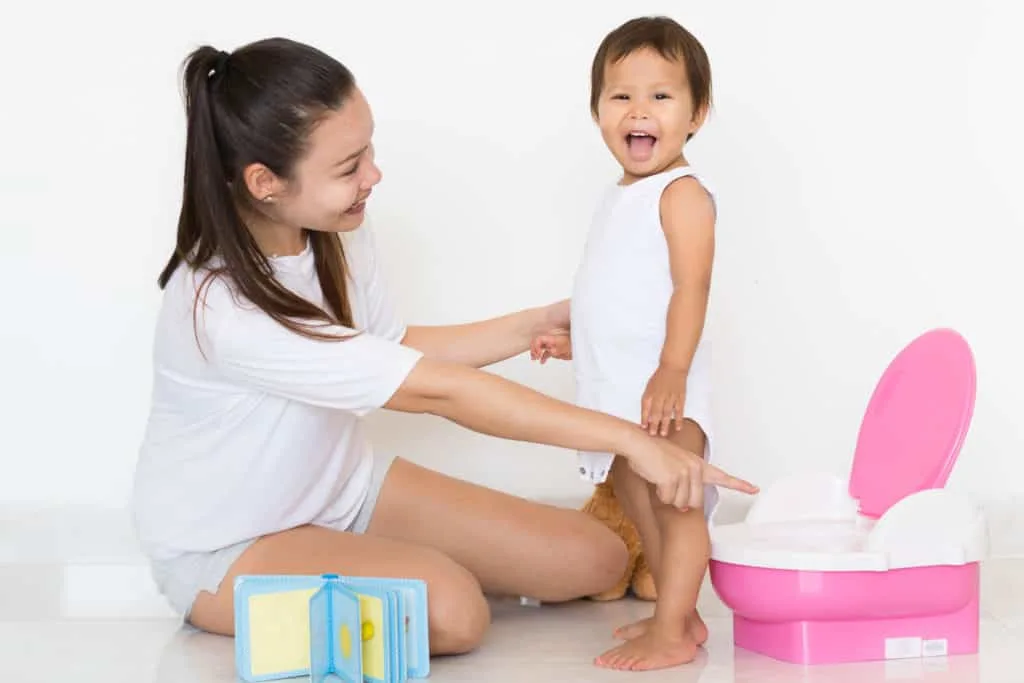
Going Diaper Free
This transition can take a while.
Using pull-ups (like these) is a great way to ease the transition.
Be ready for and expect that your child will have accidents.
Be prepared by always having an extra change of clothing in your car or diaper bag.
Potty Training Problems
One of the most common potty training problems parents run into is accidents.
Accidents are very common throughout the process and WILL happen no matter what you do.
How you handle the accident is very important.
Do not yell or scold your child.
It is not helpful to do that, and is not an effective way to teach them the skills needed to potty train.
Instead say something like, “You can try again next time, ” and move on.
Another potty training issue that many parents face is having their little one be scared or the potty or using it.
If this is the case you may want to read some books to them about using the potty to help them understand.
You could also tell them a short social story to help them get more familiar.
If they are scared of using the big potty you may want to purchase a smaller potty that makes them feel safe and transition to using the big toilet at a later time.
If you need more help with getting your little one to use the potty make sure to grab my ebook!
Potty Training Too Early
What happens if you attempt to potty train too early?
Make sure to read my post about 7 signs your child is not ready to potty train so you don’t make the mistake of starting too early!
If you try to potty train and your child is not physically or mentally ready it may not go as you planned.
Signs that you may have tried to potty train too early include your child having frequent accidents and they also may need constant reminding to go to the bathroom.
If this is happening it may be best to back off and take a break from potty training.
Wait a couple of more months or until your child is showing more interest in moving forward.
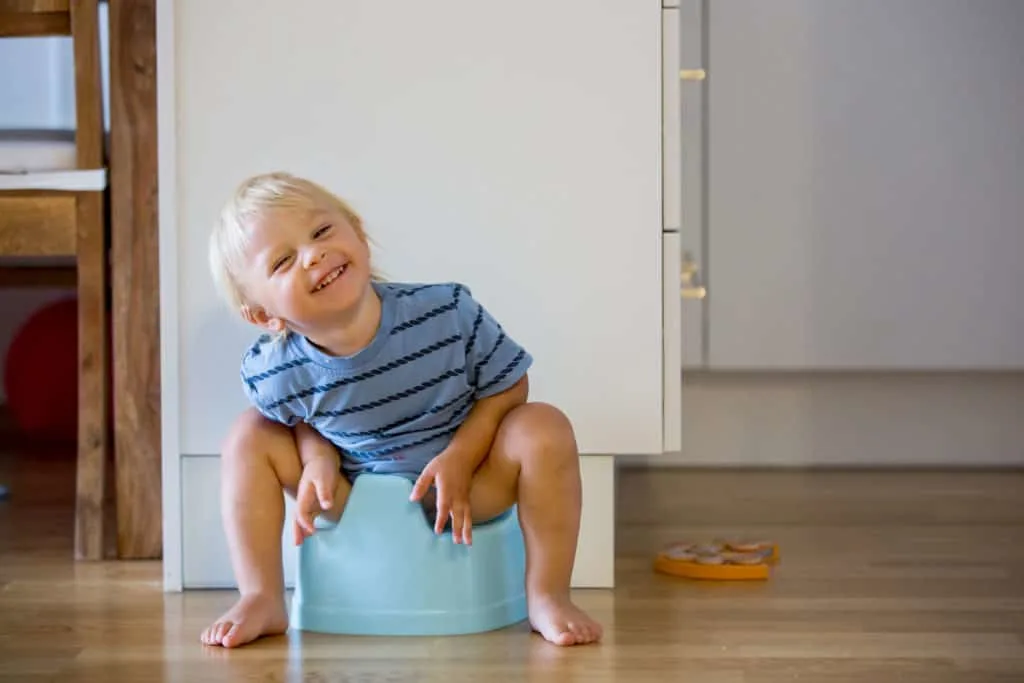
Potty Trained at Home But Not at Daycare
So what should you do if your child is using the potty consistently at home but not at child care?
The first thing to note is that it is very common for a child to gain a skill and have success in one environment, but they may not have not generalized it to a different environment.
If this is the case you will want to work closely with your child care provider to figure out a plan to generalize this new skill.
One thing that may be helpful is to have a similar area for your child to go to the bathroom at school like they have at home.
This could mean buying a duplicate of their toilet seat or potty to keep at school.
You will also want to make sure that you and your childcare provider are on the same page and have the same expectations when it comes to potty training.
Problem-solving together when issues come up and think about how the two environments are different.
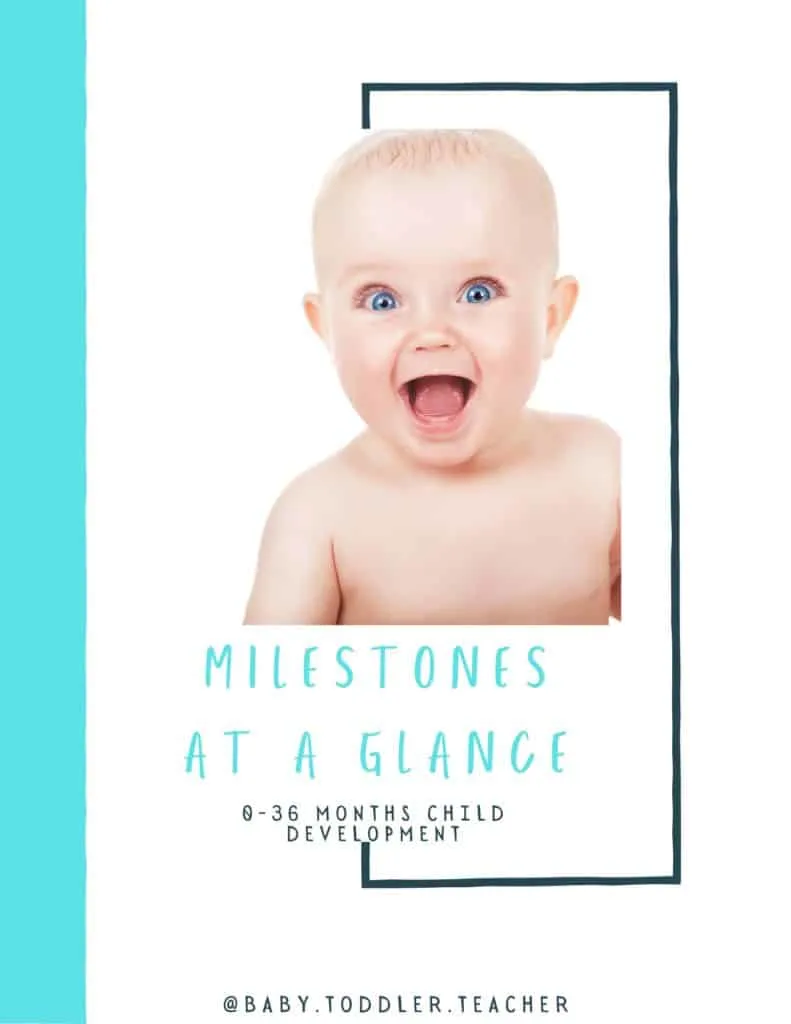
Grab your FREE Milestone Guide HERE.
Potty training is not a once size fits all process. Potty training may look a little different even between siblings! The best thing you can do when potty training your little one is making sure they are showing the readiness signs and are interested in using toilet and ready to be out of diapers.
If your toddler is not wanting to train then I would simply back off for a few months and try again at another time. If they are not wanting to train it could be a sign that they are not ready yet.
If you train too early it may be frustrating for both you and your child. If your child is not physically and emotionally ready chances are there will be more accidents.
Related Posts You Will Enjoy
Easy Math Activities for Toddlers
The Best Non Toy Gifts for Kids
Calming Activities for Toddlers Before Bed
Toddler Magazine Subscriptions You Need to Check Out!
Try These Insect Activities for Toddlers
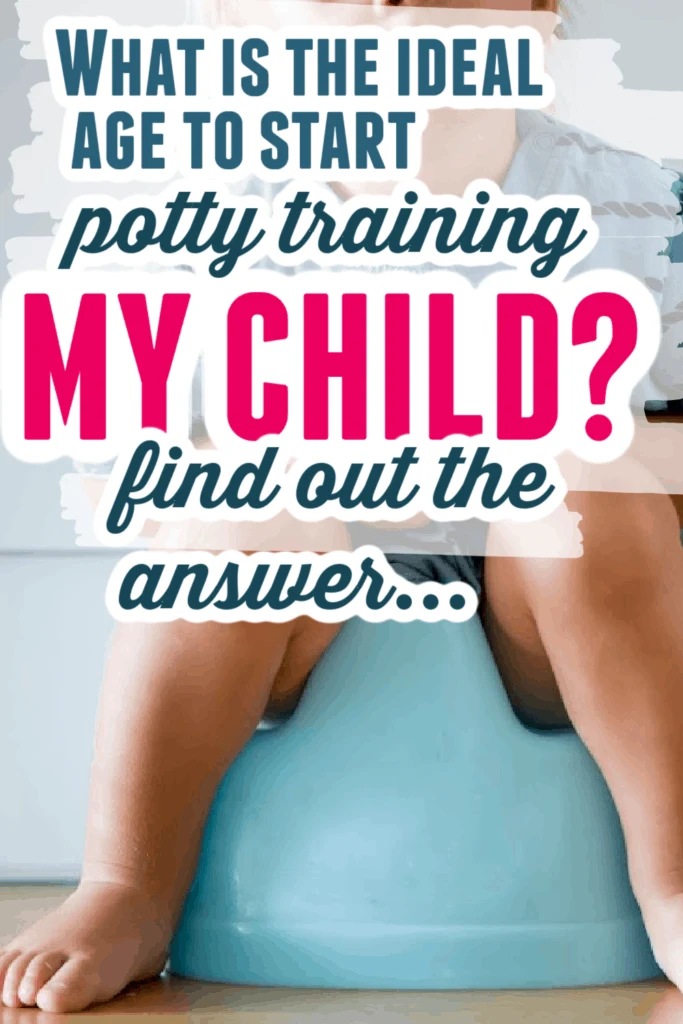

Kayla O’Neill has a master’s degree in education as well as a bachelor’s degree in special education with an emphasis in early childhood education. She has been working as a developmental therapist with babies and toddlers in early intervention since 2012. She is also a mom with two young children.